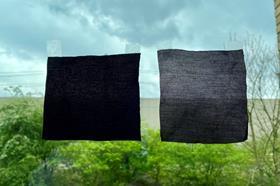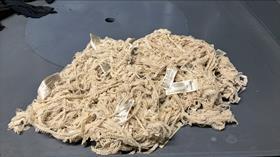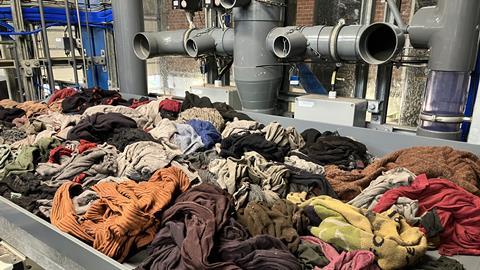Researchers in Amsterdam, together with technology company Avantium, have developed a process to extract glucose from polycotton and recycle the remaining polyester. It is already working on a pilot scale, Nature Communications reports.
With the advent of fast fashion and the disposable mentality, the textile industry has risen to third place on the list of most polluting industries, after oil and gas extraction and agriculture. There is an urgent need for a solution to the huge amounts of textiles that are thrown away, but until now it has been difficult to properly separate the cotton and synthetic mixtures. Nienke Leenders, Gert-Jan Gruter and colleagues at the University of Amsterdam have found a solution for recycling polycotton, thanks in part to Avantium’s Dawn technology.

Polycotton is a blend of cotton and polyester, a common combination in clothing. Previous processes for separating the two were not really viable, for example because the yields were too low. But the researchers found that using highly concentrated hydrochloric acid (43% w/w in water) gave much better results.
Avantium’s patented Dawn process – originally developed to convert plant materials such as wood into glucose and lignin – uses this hydrochloric acid to convert cotton into a glucose solution. Further processing produces glucose, which can be used as the basis for renewable plastics. Today, glucose is still largely derived from corn and grain, says Gert-Jan Gruter, professor and chief technology officer at Avantium, in a press release. ‘When we start producing plastics from biomass on a large scale, the world will have a great need for glucose whose production does not compete with the food supply.’

The process was found to completely separate the cotton from the polyester components, yielding 75% molar glucose. This in turn can be easily separated from the polyester (PET in this case), which the researchers then converted into bis(2-hydroxyethyl) terephthalate (BHET) using glycolysis. Another Dutch company – CuRe – can use this to repolymerise BHET into PET.
Another option is to convert the glucose solution into CMF, the basis for the building block 2,5-furandicarboxylic acid, which Avantium uses to produce polyethylene furanoate (PEF), a bio-based substitute for PET.
Gruter sees a bright future for the process. ‘Our techno-economic analysis looks quite favourable and Avantium has already invested heavily in this development. Our ambition is to take this technology to the next stage of commercialisation with partners. We are well on the way to commercialising the first non-food glucose produced by the biorefinery process.’
Leenders, N. et al. (2025) Nat. Commun. 16(738), DOI: 10.1038/s41467-025-55935-6
Amsterdamse onderzoekers ontwikkelden met kunststoffenbedrijf Avantium een proces waarmee je glucose kunt halen uit polykatoen en het overgebleven polyester kunt recyclen. Het werkt al op pilotschaal, staat in Nature Communications.













Nog geen opmerkingen